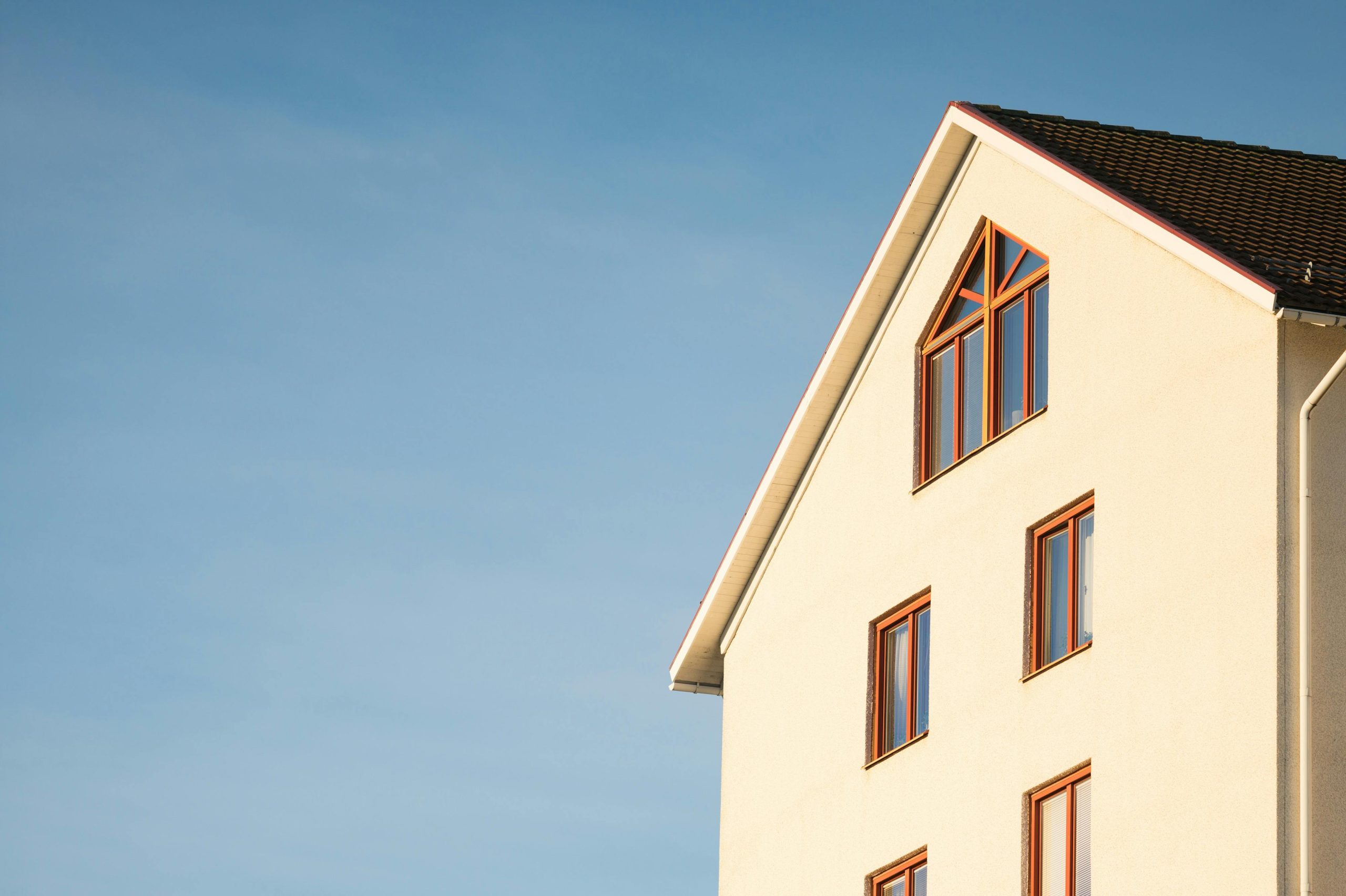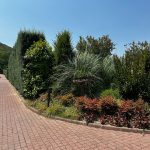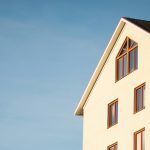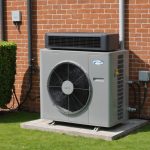Monocouche render offers a seamless blend of durability and style, transforming exteriors with rich, pre-coloured finishes that need no painting. Trusted for over 20 years, this system suits various substrates and enhances thermal performance while delivering crisp, lasting aesthetics. Explore how Monocouche’s turnkey service and expert installation ensure a flawless finish backed by a 10-year warranty.
Understanding Monocouche Render: An Overview
Monocouche Render is a single-coat, through-coloured, breathable system designed to provide a decorative and protective finish to various masonry surfaces. Its composition typically combines a polymer-modified render with natural aggregates, creating a durable solid layer that does not require additional painting.
In the same genre : Air source heat pump installation in kent: what to know
Suitable substrates include brick, block, stone, and concrete. Its versatility makes it a popular choice for exterior wall applications on residential, commercial, and restoration projects alike. The render’s breathable nature allows moisture vapor to escape, reducing condensation risks and internal dampness, which is critical for maintaining the longevity of the building fabric.
Key Benefits and Qualities
Simplified Application Process: Being a one-coat system, Monocouche Render significantly reduces labour time, applied usually in two passes, achieving a robust finish efficiently. This is especially advantageous for large-scale projects that demand fast turnaround times.
Also to read : Brighten your home: explore top fixed rooflights options
Wide Range of Coloured Finishes: It is available in numerous options, such as neutral whites and a spectrum of tinted colours, allowing for tailored aesthetic effects. This variety is particularly appealing in contemporary architectural designs.
Durability and Weather Resistance: The material’s resistance to cracking, fading, and weathering makes it suitable for the variable British climate. Its protective properties mean ongoing maintenance is minimal, mainly limited to gentle cleaning.
Aesthetic Flexibility: Finishes can be formed by various textures such as scraped, floated, or roughcast, matching different style preferences. Its ability to sustain colour over long periods ensures lasting visual appeal, making it a preferred choice in the UK market.
Cost and Warranty: Providers often offer competitive pricing and backing through extensive warranties, sometimes up to 10 years, covering materials and application workmanship. This assurance supports confidence in their long-term performance.
Application and Maintenance Tips
Proper substrate preparation, including cleaning and priming, is vital to ensure adhesion. Although reinforcement mesh is not mandatory, it should be placed around vulnerable spots like window openings to prevent cracking.
Cleaning involves gentle brushing and low-pressure washing, avoiding harsh chemicals to preserve the integrity of the finish. The drying time generally ranges from 24 to 48 hours, depending on environmental conditions, after which the render can last up to 25 years under suitable maintenance.
You can view more details on this page: Monocouche Render, which explains its characteristics in greater detail. Its ease of application, combined with its aesthetic versatility and durability, makes Monocouche Render an excellent choice for both new constructions and renovation projects aiming for a high-quality finish.
Benefits and Performance of Monocouche Render
Durability and Weather Resistance
Monocouche render stands out for its exceptional durability and weather resistance. Thanks to its advanced formulation, monocouche render offers reliable protection for exterior walls, performing strongly in both damp and harsh climates. This robust render system significantly reduces the risk of cracking, fading, and water ingress, providing a single-layer, breathable barrier that shields against moisture while allowing vapor to escape. These properties make monocouche render particularly suitable for areas prone to heavy rainfall or freeze-thaw cycles. When compared to traditional renders, monocouche render’s moisture resistance and impact resistance factor into its long lifespan—often up to 25 years with proper monocouche render maintenance tips applied. Effective application minimizes common monocouche render problems like premature deterioration or damp spots that may occur with less advanced solutions.
Aesthetic Flexibility and Finish Options
With monocouche render, architectural creativity remains highly achievable. The system supports a vast palette of monocouche coloured finishes, including both subtle and bold options, making it simple to match or transform a building’s exterior. Popular monocouche render colours, such as cream, white, and clay, as well as bespoke hues, help maintain a modern or traditional appearance according to the property’s character. Various monocouche render finish types—scraped, floated, or roughcast—offer texture and depth, tailored to suit contemporary designs or heritage projects. Unlike some renders, the through-colour composition of monocouche render prevents flaking and reduces the need for repainting. For those considering updates, learning how to paint over monocouche render can further extend the aesthetic lifecycle while keeping colours vibrant and resistant to UV exposure.
Long-term Cost Effectiveness
Monocouche render ensures that both new builds and renovations benefit from a cost-effective exterior finish. Its straightforward monocouche render application process, often completed in just two passes, reduces labour time and related expenses. By eliminating the need for topcoat painting and lowering ongoing upkeep, monocouche render installation cost breakdown proves especially competitive for larger projects or developers prioritizing value. Over time, reduced maintenance needs mean fewer interventions and less reliance on monocouche render repair techniques. Choosing monocouche render systems, particularly those backed by extensive monocouche render warranty details, can minimize costs associated with unexpected remedial work or replacements. For added assurance, leading suppliers often support their solutions with direct technical support and best practices for monocouche cleaning, ensuring continued performance and aesthetic appeal for years to come.
Application Process and Techniques
Surface Preparation Best Practices
Precision begins with proper surface preparation. For monocouche render application, surfaces must be clean, stable, and dry—free from dust, loose materials, algae, or efflorescence. Any previous coatings or degraded render should be removed, as they jeopardize monocouche render adhesion and finish quality. Cracks in masonry require repair to avoid future monocouche render problems. Substrate compatibility is key; monocouche render works with brickwork, blockwork, and stable masonry, supporting robust protection and a range of monocouche coloured finishes. Ensuring an even, well-bonded substrate minimises the risk of cracking and maximises durability of monocouche render.
Application Tools and Techniques
The monocouche render application process typically unfolds in two steps using either a stainless steel trowel (hand method) or a mechanical spray machine. Begin with the first pass to establish a uniform monocouche render thickness; allow slight stiffening. The second pass builds the desired depth for weather resistance and texture. Hand and spray application must ensure consistent coverage, especially around detail work, for seamless monocouche aesthetics. Tools such as notched rules, feather edges, or floats help control the monocouche render finish types—scraped, floated, or textured. Thick, even coverage and attentive toolwork prevent common mistakes when applying monocouche render, including patchiness or weak bonds.
Curing and Drying Conditions
Curing and drying dictate the strength and appearance of the monocouche render. Ideal conditions fall between 5°C–30°C, away from strong winds, direct sunlight, or heavy rain, all of which disrupt monocouche render drying time expectations. The initial set typically occurs within 2–16 hours, depending on the environment and substrate absorbency. Full hydration takes 24–48 hours, during which monocouche render maintenance tips urge keeping surfaces undisturbed; avoid pressure or over-wetting. Monocouche render curing time ensures long-term weather resistance and maintains selected popular monocouche render colours by supporting uniform pigment development. Proper drying allows for optional surface texturing—scraping for a crisp profile or floating for a smoother look. This controlled process delivers the durable, low-maintenance monocouche render overview sought for both new developments and refurbishments.
Colour and Finish Options
Popular Monocouche Render Colours
Precision: Monocouche render is available in a wide array of coloured finishes, with options ranging from bright whites to subtle creams, earthy reds, and contemporary greys. This variety allows property owners to select colours that reflect both personal tastes and architectural trends. Monocouche render overview guides show that many choose soft tones for heritage buildings, while modern builds often use bold, contrasting shades. A distinct benefit of monocouche render for exterior walls lies in its consistent pigment throughout the layer. As a result, common issues like patchiness seen with painted surfaces are rarely encountered when following the monocouche render application process.
Choosing monocouche render systems with pre-coloured blends also means maintenance is simpler, since chips and wear do not reveal unattractive base layers. Projects focused on monocouche render for new builds can benefit from this integrated colour, especially when aiming for a uniform, easy-to-maintain exterior aesthetic.
Texture Varieties and Customization
Precision: Textural choice plays a pivotal role in determining the ultimate look of any monocouche render. The main texture varieties include scraped, floated, and roughcast finishes. A scraped finish is created by removing the surface layer after initial set, forming a clean and even appearance that emphasizes the colour’s brightness. Floated finishes are smoother, reflecting more light and providing a sleek profile suitable for contemporary properties. For those wanting more traditional charm, roughcast finishes use coarse application methods to impart a time-worn, rustic character.
Adapting textures allows architects and homeowners to harmonize external render systems with surrounding architectural features. Monocouche render texture customization is also possible by varying grain size or pattern, ensuring each project achieves its desired visual impression. Differences between monocouche and silicone finishes frequently come down to textural preferences and required levels of maintenance, but monocouche render’s single pass and customization flexibility are distinct advantages noted in many monocouche render overview materials.
Colour Longevity and Fading Resistance
Precision: One of the benefits of monocouche render is its resistance to fading and colour degradation. The pigments are integrated into the dry mix, providing through-coloured protection against UV rays and weather exposure. This ensures that monocouche render for exterior walls retains its appearance for extended periods, even in challenging British climates known for their variability.
Unlike conventional paint, monocouche render colour longevity is enhanced by weather-resistant formulations. Monocouche render colour fading resistance is demonstrated by its ability to withstand repeated freeze-thaw cycles without significant loss of vibrancy. When correct application guidelines are followed, these renders maintain their finish and shade, decreasing the need for repainting and reducing overall costs. Monocouche render maintenance tips further recommend periodic gentle cleaning to prevent algae growth and surface dirt—helping to preserve both the texture varieties and colour intensity over time.
By offering an extensive range of monocouche coloured finishes in various texture patterns and maintaining high standards of fading resistance, monocouche render remains a preferred solution for both durability and aesthetic versatility in UK construction.
Maintenance, Repair, and Longevity
Cleaning and Upkeep Procedures
Precision: For best practices for monocouche cleaning, use a soft bristle brush and mild detergent to remove dust, algae, and debris. Avoid harsh chemicals, abrasive tools, or high-powered pressure washers that may damage the finish or compromise the monocouche render overview. Rinsing with a low-pressure hose is generally safe. These monocouche render maintenance tips preserve surface integrity without dulling monocouche render coloured finishes or altering the texture.
Elaboration: Gentle and routine cleaning supports the monocouche render color longevity and allows monocouche render for exterior walls to maintain their appearance year after year. Leaves, cobwebs, and environmental build-up can be swept away monthly, while annual maintenance washes prevent ingrained grime from impacting monocouche render aesthetic qualities.
Crack Prevention and Repair Methods
Precision: Monocouche renders may develop hairline cracks with building movement, but following monocouche render repair techniques ensures long-term durability. For minor surface damage, clean the area thoroughly, then apply a matching repair mortar recommended in monocouche render maintenance tips. Reinforcement mesh around stress points like corners and window reveals offers additional crack resistance and is considered a beneficial improving durability of monocouche render practice.
Elaboration: Always monitor for persistent moisture, as ongoing damp may signal underlying issues beyond cosmetic repairs and could affect monocouche render drying time expectations. Prompt intervention with appropriate repair products—especially where substrate movement is likely—preserves both function and the monocouche render application process outcomes.
Extending Longevity with Proper Maintenance
Precision: With correct care, monocouche render for new builds can last up to 25 years. This exceptional endurance depends on factors such as quality of installation, following monocouche render maintenance tips, regular inspections for debris and damage, and adherence to manufacturer guidance for any monocouche render repair techniques or touch-ups.
Elaboration: Avoiding excessive impact, maintaining water drainage away from rendered surfaces, and attending promptly to any algae or lichen growth will further secure the benefits of monocouche render. For those seeking reliable exterior protection and enduring popular monocouche render colours, this finish combines minimal maintenance with a robust lifespan, making it ideal for contemporary and traditional facades alike.
Consistent upkeep ensures your monocouche render overview translates into long-term visual appeal and functional excellence, supporting the structure’s aesthetic and weather resistance throughout its service life.
Cost Factors and Pricing
Precision answer (SQuAD method):
The installation cost of monocouche render depends on surface type, project size, complexity, material costs, and labour charges. Typical project costs may vary widely, but key cost drivers include the substrate material, total render area, access requirements, and chosen monocouche coloured finishes. Large-scale applications or designs with intricate surface profiles generally require more time and resources, raising the final pricing.
Price Range Estimates and Budgeting
For most exterior projects, monocouche render pricing guide figures center on the size and complexity of the area to be covered. Applying monocouche render for exterior walls generally starts from a modest per-square-meter rate, but unique factors—such as unusual surface profiles or restoration needs—can shift budgets. Material costs account for the type and hue of monocouche render coloured finishes, with popular monocouche render colours potentially incurring slight premium charges, especially for bespoke shades. Labour charges rise when the monocouche render application process involves scaffolding, manual customization, or additional substrate preparation.
Factors Affecting Installation Costs
Several variables influence the final monocouche render installation cost breakdown:
- Surface Preparation: Thorough substrate preparation ensures durability and adhesion for monocouche render. Surfaces that are damaged or uneven may need extra care, impacting both the timeline and expenses.
- Chosen Finish and Texture: Custom monocouche render texture varieties or non-standard monocouche render coloured finishes can affect pricing through longer application times or special techniques.
- Labour vs Materials: While materials themselves—mainly polymer-modified renders—constitute a significant share of the monocouche render pricing guide, complex layouts or repairs require more skilled labour, which escalates overall costs.
Comparing Costs with Alternative Renders
Monocouche vs traditional renders or silicone-based finishes often reveals the all-in-one appeal of monocouche render: a single coat system that reduces installation time and aftercare. Although initial outlay for monocouche render for new builds or major renovations may seem higher, the system’s quick application and lower ongoing maintenance needs can offset the upfront expense. Monocouche render delivers cost-effective durability with consistent colour longevity, while alternatives like multi-coat sand and cement typically necessitate further painting or treatment, increasing total life-cycle costs.
Prioritizing the right monocouche render for exterior walls—considering colour selection and finish—is essential in balancing value, aesthetics, and maintenance. Careful analysis of these principles ensures that each project is tailored for both immediate visual impact and lasting performance.
Technical and Regulatory Considerations
Monocouche Render and Building Regulations
Monocouche render offers robust compliance with UK building regulations, particularly in terms of weatherproofing and thermal performance for exterior finishes. Its breathability and moisture management set it apart from traditional renders, ensuring reduced damp risk. As part of the monocouche render application process, the system forms a continuous, weather-resistant barrier that still allows water vapour to escape—essential for meeting both regulatory requirements and the demands of British weather. Compatibility with the latest standards is verified through monocouche render certification standards, providing reassurance for installers and property owners alike. When properly installed, this material supports compliance for everything from new builds to retrofits, meeting both energy efficiency and fire resistance criteria.
Compatibility and Integration with Modern Systems
Selecting the right monocouche render for exterior walls involves confirming compatibility with a variety of substrates and insulation systems. Monocouche renders perform seamlessly on blockwork, brickwork, stonework, and concrete. This versatility is a core advantage, especially for those seeking an efficient, monocouche render application process across variable construction styles. Integration with advanced insulation systems supports modern energy standards. Solutions such as EPS (expanded polystyrene), mineral wool, or ICF further enhance performance and maintain compliance without compromising on finish quality or colour stability over time. The broad spectrum of monocouche coloured finishes satisfies architectural requirements while ensuring the envelope stays protected.
Environmental and Eco-Friendly Monocouche Options
For those considering sustainability, eco-friendly monocouche render options are available. These products are designed to limit environmental impact through non-toxic binders and sustainable raw materials. Advanced formulas promote recyclability and low emissions, responding to evolving regulations and rising client expectations. By choosing these renders, building professionals align with greener construction trends while delivering on the benefits of monocouche render for exterior walls, safeguarding both the structure and the environment.
Suitability for Heritage and Restoration Projects
Applying monocouche render in heritage and restoration settings requires sensitivity to the original building materials and appearance. Designed to mimic traditional lime-based finishes but with superior weatherproofing and monocouche render maintenance tips, these renders protect and beautify older properties. The process allows for preservation of detail while meeting monocouche render building regulations for breathability and compatibility, making it an optimal solution for retaining historic character alongside modern protection.
Weatherproofing and Breathability Standards
A signature advantage of the monocouche render application process is the balance between weatherproofing and breathability. Advanced vapour permeability standards support monocouche render for exterior walls—preventing water from entering while expelling trapped moisture. This characteristic is key to long-term durability, colour retention, and minimising common issues such as cracking or algae growth. Consistently meeting or exceeding monocouche render certification standards, these renders deliver on modern expectations for both performance and aesthetic value.
Monocouche render stands out both technically and aesthetically, fulfilling regulatory demands while offering a streamlined, reliable protection method for modern and heritage buildings alike.
Comparing Monocouche with Other Renders
Monocouche vs Traditional Renders
Precision: Monocouche render is a single-layer system combining colour and durability, while traditional renders generally require multiple layers and external painting. Recall: Monocouche render differs from traditional systems by allowing faster, more efficient application—simply mix, apply in two passes, and finish without a topcoat. With monocouche render, you also get improved weather resistance and breathable performance that helps moisture escape and prevents water ingress, which is less assured with classic sand and cement systems.
This efficiency doesn’t just speed up projects; it also reduces labour costs, making the monocouche render application process appealing for time-sensitive or high-volume jobs. Its coloured finish eliminates the ongoing need for painting, adding to cost-effectiveness and simplicity in maintenance. In contrast, traditional renders often need repainting and carry higher risk of cracking unless properly maintained, so for those seeking long-term value, monocouche render for exterior walls stands out.
Monocouche vs Silicone and Acrylic Finishes
Looking at monocouche render vs silicone render, key differences emerge in both application and performance. Monocouche render is applied thicker in a single layer, resulting in robust, through-coloured protection. Silicone finishes are typically used as a thin, flexible, water-repellent topcoat, notable for their exceptional hydrophobic properties and flexibility, making them popular where movement and maximum water resistance are priorities. Acrylic renders fall in between, providing flexibility and colour options, but may not match monocouche render’s breathability.
For projects prioritising speed, broad colour choices, and long-lasting aesthetic appeal without the need for later painting, monocouche render remains an attractive choice. If a surface requires even more resistance to algae or exceptional flexibility to withstand substantial substrate movement, a silicone solution might be better suited, though it generally carries higher costs and sometimes requires a base layer underneath.
Suitability for Different Building Types
Selecting the right render depends on the substrate and building use. Monocouche render for new builds offers compatibility with blockwork, brick, and stonework, makings its adaptability ideal for both commercial and residential projects. Its broad palette ensures popular monocouche render colours complement diverse architectural styles—from classic to contemporary.
Silicone or acrylic systems may be preferred where insulation boards are used or on high-movement substrates, thanks to their extra flexibility. Monocouche render application process, meanwhile, delivers superior aesthetic consistency and durability on stable masonry, especially where colour longevity and minimal maintenance are key requirements.
Monocouche render’s robustness, weather resistance, and easier maintenance make it a leader for straightforward, cost-effective, and visually appealing finishes across a wide range of exterior applications.
Supplier Selection and Installation Support
How to Select a Trusted Monocouche Supplier
The process of choosing a monocouche render supplier directly impacts finish quality, project efficiency, and long-term value. Precision is vital: opt for suppliers with proven expertise and transparent histories in the market. Assess their experience, track record on monocouche render for exterior walls, and whether they present a clear monocouche render pricing guide. Quick response to technical queries is a strong indicator of reliability.
Trusted suppliers should offer a comprehensive range of monocouche coloured finishes to suit varied architectural needs, with clear support for colour matching and specification advice. Ensure the supplier demonstrates thorough understanding of the monocouche render application process, including system compatibility with different substrates—this shows an ability to guide projects from design to completion. The best suppliers integrate technical support with continuous communication for peace of mind throughout the project.
Installation Best Practices and Quality Assurance
A reliable supplier doesn’t just deliver product—they provide or recommend trained teams familiar with monocouche render for new builds and renovations, minimizing issues like uneven curing or accidental substrate incompatibility. Evaluate if the supplier manages application in-house, as direct control over the monocouche render application process can guarantee workmanship matches the manufacturer’s standards and eliminates middle-layer confusion.
Suppliers with in-house installation teams foster tighter quality assurance: specifications tailored to each site, direct accountability, and reassurance that manufacturer guidance on thickness, primer compatibility, and environmental handling are strictly observed. Installers must reference monocouche render texture varieties, handle environmental sensitivities, and use tools validated for this product. These teams are often equipped to recommend maintenance routines, ensuring enduring, durable surfaces and supporting clients in troubleshooting common issues.
Warranties and Post-installation Support
Confirm the warranty covers not only the materials but the monocouche render application process itself—including defects arising from workmanship. The strongest offers come from suppliers managing full project cycles, as their control over all elements allows them to issue robust 10-year warranties.
Reliable suppliers outline their post-installation support clearly: quick responses to queries, guidance on safe monocouche render maintenance tips, and practical advice for addressing potential problems. Access to technical resources for troubleshooting common issues with monocouche render, including repairs, is crucial. Additionally, a reputable supplier will provide documentation on preserving monocouche coloured finishes, advice for spot repairs, and seasonal maintenance.
For the best project experience and to maximize the benefits of monocouche render systems, invest in suppliers who combine expert guidance, in-house teams, and full project accountability from start to finish.
Environmental Impact and Innovations
Sustainable Materials and Application Benefits
Eco-friendly monocouche render options are reshaping modern building practices. These renders typically incorporate natural binders, lime, and carefully chosen aggregates to lower environmental impact from production through disposal. Advanced monocouche render systems often use pigments derived from mineral sources, ensuring a reduced reliance on chemical additives. This makes monocouche render overview particularly appealing for consumers seeking sustainable finishes for exterior renovation.
One of the most notable benefits of monocouche render, compared to traditional finishes or silicone alternatives, is its breathability. The render’s vapor permeability is key in managing moisture within walls, preventing damp and mold growth. This attribute directly influences the longevity of buildings. By allowing water vapour to escape yet blocking rain penetration, monocouche renders support healthier indoor environments and preserve structural integrity.
Advances in Weatherproof and UV-Resistant Technologies
Innovations in the monocouche render application process now prioritize resistance to the UK’s demanding climate. UV stabilization is integral to modern monocouche render for exterior walls, as it greatly reduces colour fading over time, ensuring monocouche render colour longevity. Enhanced weather resistance, achieved through the inclusion of high-grade polymers, ensures protection from freeze-thaw cycles and aggressive rainfall—key factors in the benefits of monocouche render for exposed surfaces.
Many products, such as those detailed in the monocouche render pricing guide, feature through-coloured finishes that eliminate the need for frequent repainting, reducing long-term maintenance. Additionally, new monocouche render texture varieties and textures are engineered to shed algae and resist soiling, keeping facades fresher for extended periods.
Impact on Building Longevity and Energy Efficiency
Choosing monocouche render systems is increasingly favored not just for their easy maintenance but also for tangible performance improvements. These renders can be paired with insulated render systems to enhance thermal efficiency, meeting modern standards for energy conservation in both new builds and renovations. Breathable and sustainable eco-friendly monocouche render options contribute to lower heating costs and more comfortable interiors.
The robust monocouche render overview shows that, when correctly applied, these products significantly extend the lifespan of external walls by minimizing damp and controlling cracking. By selecting from a range of monocouche coloured finishes—available in popular monocouche render colours like white, cream, and grey—project managers can achieve durable, fade-resistant façades with minimal intervention, optimizing building value and onward environmental impact.











